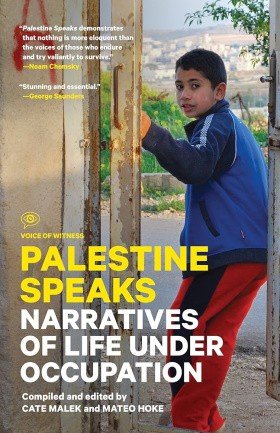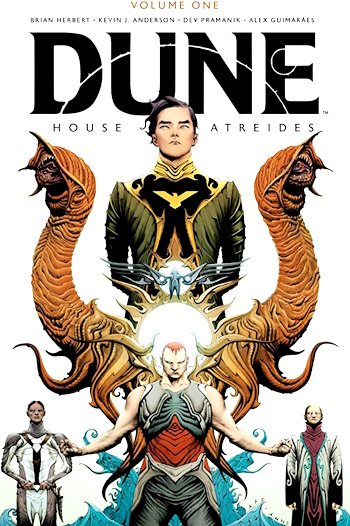5 Ramallah is a city of over 30,000 people. It has experienced rapid growth since it was adopted as a de facto administrative capital by the Palestinian Authority following the Oslo Accords. Numerous nongovernmental organizations (NGOs) and diplomatic outreach offices are also based in the city. Ramallah is located about ten miles northeast of Jerusalem, the city many Palestinians consider Palestine’s true capital.
6 Birzeit University is a renowned public university located just outside Ramallah. It hosts approximately 8,500 undergraduates.
7 The First Intifada was an uprising throughout the West Bank and Gaza against Israeli military occupation. It began in December 1987 and lasted until 1993. Intifada in Arabic means “to shake off.” For more information, see Appendix I, page 295.
8 Israel carried out the mass arrest of Palestinian citizens during the First Intifada. More than 120,000 Palestinians were arrested or spent time in prison from 1987 to the signing of the Oslo Accords in 1993.
9 Al-Bireh is a city of over 40,000 people just east of Ramallah.
10 The Friends School of Ramallah is a Quaker-run institution that was opened in 1889, during the time of Ottoman rule.
11 The first Oslo Accords negotiations took place in Norway, the U.S., and France during the summer of 1993. The Accords outlined a plan for the Israeli military to withdraw from Gaza and the West Bank in stages while further negotiations would be carried out regarding Palestinian statehood, security, borders, and Israeli settlements. For more information, see Appendix I, page 295.
12 Access to Jerusalem was significantly restricted to Palestinians from the West Bank before the Oslo Accords in 1993. Haifa is a city of 270,000 people in northern Israel. Jaffa, now part of Tel Aviv in Israel, was home to many Arabs before 1948.
13 Earlham College is a Quaker-affiliated liberal arts college in Richmond, Indiana. It has an enrollment of 1,210 students and has regularly accepted a large cohort of Palestinian students since the signing of the Oslo Accords.
14 Though a small portion of the barrier wall in the West Bank was constructed as early as 1994, construction of the wall increased rapidly in 2002.
15 Qalandiya is a refugee camp and city of nearly 30,000 located between Jerusalem and Ramallah. It’s also the name of the nearby checkpoint, one of the biggest in the West Bank.
16 Bard College is a liberal arts college in Dutchess County, New York, on the Hudson River. It serves just over 2,000 undergraduate students. Bard formed an alliance with Al-Quds University in 2009, with the idea of bringing training in liberal arts education to Palestine.
17 The Mövenpick Hotel in Ramallah is part of a Swiss chain of international luxury hotels. The hotel in Ramallah was opened in the fall of 2010.
18 Abu Shusha was a Palestinian village of under 1,000 near the city of Ramla that was destroyed in the war of 1948. Zakariyya was a Palestinian village of just over 1,000 northwest of Hebron that was destroyed in the war of 1948.

ELI SETTLEMENT, WEST BANK
AMIAD COHEN
Executive of the Eli settlement, 32
Born in Kfar Etzion, West Bank
Interviewed in Eli, West Bank
We first meet Amiad Cohen in 2012 while on a United Nations–sponsored tour of freshwater springs in the West Bank. Much of the West Bank outside the valley of the Jordan River is arid, and the struggle for control over water resources is a major flashpoint in the tensions between Palestinians and Israeli settlers. At Ein Al-Arik, which is located halfway between the West Bank cities of Ramallah and Nablus, the springs have been developed into natural bathing pools and a park by the nearby Eli settlement.1
As part of a group of journalists and NGO workers, we walk among olive trees on a sloping, rocky hillside while our guide tells us of the Palestinian villages cut off from the spring by its recent development by the settlement into a park. Soon an Israeli security truck pulls up, and Amiad and one of his students get out to see what’s going on. Before long, Amiad and the head of a local Palestinian village are engaged in heated argument—the Palestinian man claims the lands where the springs reside belong to his family. After things calm down, we approach Amiad and explain our work.
Later we meet Amiad in his office in Eli, a settlement laid out over eight hilltops twenty minutes north of Ramallah. He has brown eyes, a three-day beard, and his hairline appears to be receding towards his yarmulke. His desk is strewn with papers, binders, large rings of keys. “Someone told me a messy desk means a messy mind,” he says. “So what does an empty desk mean?” His office is modest, without much more than a computer and some security monitoring equipment. He’s not there very often. His real office is his truck, which he drives from neighborhood to neighborhood in the settlement.
Amiad takes us on a tour of Eli in his truck, showing us mountain views, soldier memorials, and Bnei David—a pre-army school that Eli is known for. He also invites us to his home, a trailer he shares with his wife and two young children. The floor of his small living room is strewn with plastic toys, and one wall of the room is packed with books.
When we check on Amiad at Eli two years later, he’s been promoted from head of security to a position he describes as CEO of Eli. Essentially, he says, he oversees the day-to-day operations of Eli, from the water and sewage systems to the building of new community projects. Still, he says, he only spends an hour a day in his office.
“WE’RE ZIONISTS, WE’RE GOING TO ISRAEL”
I was born on a kibbutz in Kfar Etzion, south of Jerusalem in the West Bank, in 1982.2 I have five siblings—two younger brothers and three older sisters. I’m the oldest boy. The kibbutz where I grew up was part of the only Jewish settlement that was demolished in the ’48 war. The Jordanians and other Arabs conquered it in ’48 and killed almost everyone. Then in 1967, a man who had been a child there and one of the few survivors of the ’48 war came back and established a new settlement.3
My mother grew up in a very blue-collar family in Batya near Tel Aviv, and my father grew up in Be’er Sheva.4 All my family is originally from New York City and Long Island. My grandfather, my father’s father, fought for the U.S. in World War II. He married my grandmother in 1950 and told her, “We’re Zionists, we’re going to Israel.”5 First they moved to Batya. But my grandfather wanted to go into the army and build settlements, so that’s what he did.
I was born in Kfar Etzion, but when I was three and a half, my family moved to South Africa—to Johannesburg. We lived there in the apartheid days, and we had five helpers living in the house. I was a good student, a good kid. But I couldn’t go out of the house often because of security problems.6 We could be kidnapped or killed. So I went to school on a bus with an armed guard, and then I’d head straight home after school. To visit friends in another neighborhood, we had to make an appointment two weeks ahead for an armed escort. It was crazy.
We returned to the settlements in 1989, when I was seven. This time we moved to Efrat.7 But we had a nice home, a big home with a pool. My father is very intelligent, and he got into the computer business sometime in the early nineties, right around the time the Internet became popular. I learned about computers early. As a thirteen-year-old, I wrote HTML—and that was when it had just been invented. I also taught computers to adults. I taught Excel, PowerPoint, and Word when I was a teenager.
I left school a year before graduating from high school, in eleventh grade, because I was bored. I felt like I was wasting my best years and I thought, What am I doing now? I have a problem with not doing anything. I like to be busy. So I dropped out. I volunteered for a year, teaching and working with children. Then I came to Bnei David, the pre-army academy here in Eli, studied here for a year, and then I joined the army.
ELI IS STILL NOT LEGALLY RECOGNIZED BY ISRAEL
The settlement I came to for school, Eli, was established in 1986. Eli comprises eight separate hills. We’re on top of a hill in the original part of the settlement that was established by twenty, thirty families.
Plans were made to settle the area in the late sixties, after the ’67 war, and settlers started coming here in ’76, something like that. Originally, the Israeli government planned a city of 100,000 people, and the first residents came from Shilo, just south of here.8 Building Eli was all part of the dream of many of us settlers to bring as many Jews as possible to this part of the West Bank—a million Jews to the West Bank. In the 1980s, the government of Israel tried to encourage people to move to this region by paying for homes, roads, everything.9 And then in the mid-nineties the government stopped promoting settlement.10 So Eli didn’t grow as fast as its planners had originally hoped.
Bnei David was established in 1989 by a rabbi who wanted to make a new kind of school that would be a pre-army yeshiva.11 The goal was that students would study the Torah to build themselves into better soldiers, better civilians, better people.
Bnei David was the first school like that. And now it’s a revolution in the Zionist community. There are twenty pre-army schools that are religious like the one here in Eli, and there are twenty secular pre-army academies. I teach here at Bnei David, and I teach in Tel Aviv in a secular one. And it started here in Eli. Most of the population of Eli today graduated from this yeshiva, and now we have high-ranking officers in the army who live here. Generals, major generals live here—ten, fifteen generals in a small town of almost 4,000 people, because of Bnei David.
But the problem we have in Eli is that the town is still not legally recognized yet by Israel. Or I should say, Eli was recognized by the state of Israel, but they didn’t finish the process. They encouraged the settlement back in the eighties but haven’t officially recognized the settlement following the agreements in the mid-nineties. The secretary of defense needs to sign an order to recognize us, but most of the secretaries of defense in the past twenty-five years have been too far left politically to acknowledge settlements like Eli.12 That’s one problem. The second problem—we live in a place that is in between two administrative areas. There are Areas A and B, which are supposed to be governed by the Palestinians, and Area C, which is for Israel and the settlers.13 We’re exactly in between. That means that land ownership and enforcement of the law in this area are very unsettled. That’s an understatement. For the Arabs around here, there’s no bookkeeping about who owns what land, and so a lot of Arabs make claims on land as personal property without having any written records. No one knows the facts. We can’t prove anything about land ownership, and they can’t prove anything, so it’s a problem.14
WHEN IT’S WAR, IT’S WAR. WHEN YOU’RE MORAL, YOU’RE MORAL.
After graduating from Bnei David, I joined the army. In 2001, when I started, the mandatory conscription was for three years.15 I was in the Golani Brigade.16 And in Golani they have special units, and I was in a special unit whose expertise is demolition. I worked with explosives—RDX-10, C-4.17 Our job was to demolish Palestinian bunkers and weapons caches throughout the Gaza Strip, in the West Bank, in Lebanon. Our unit could do crazy stuff with explosives. We could go into a building and blow up only one room without hurting the building, for instance. There were situations where we might find Palestinian explosives in a room and need to detonate them, but we didn’t want to destroy the whole building. We’d have to make a hole in the wall and set up our explosives a certain way so the explosion was directed out of the building. It was very difficult. Sometimes it didn’t go as planned, and the whole building would crash down. We tried to do our best so that nobody was hurt or killed.
The most difficult period of my service was fighting in the Gaza Strip in 2004 through 2005.18 It was very extreme, very frightening there. Plenty of friends were injured, plenty of my fellow soldiers. In Gaza we were fighting mostly Hamas. But we couldn’t always distinguish who was Hamas and who was not, and my soldiers and I had plenty of talks about how to be moral about war. Questions that you don’t hear plenty of people ask. When it’s war, it’s war. When you’re moral, you’re moral. The two don’t always go together. But we tried to ask the questions, How do you do it? How do you act morally in this situation? If a child gets caught up in our operations, what would we do?

























